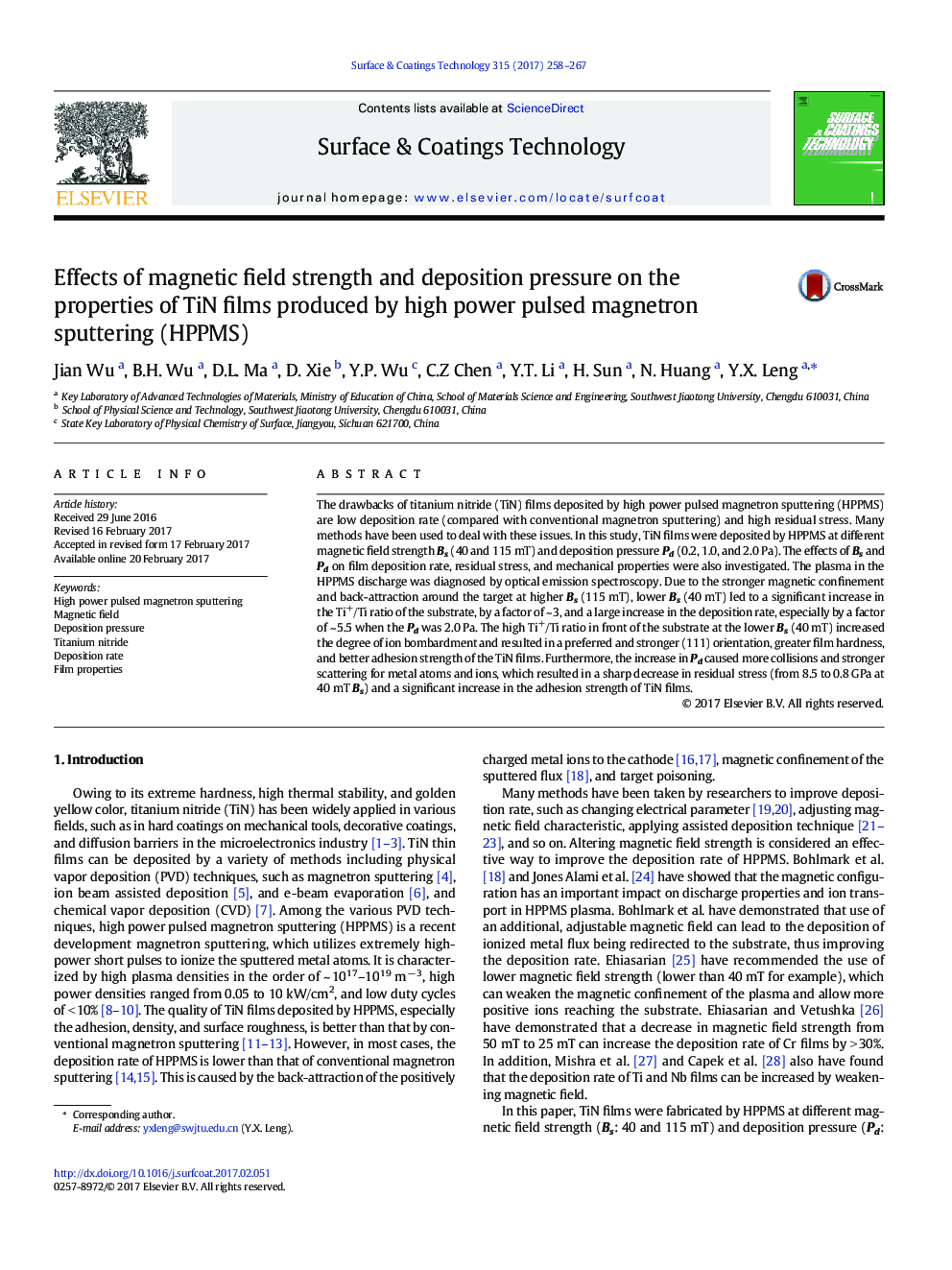| Article ID | Journal | Published Year | Pages | File Type |
|---|---|---|---|---|
| 5464679 | Surface and Coatings Technology | 2017 | 10 Pages |
Abstract
The drawbacks of titanium nitride (TiN) films deposited by high power pulsed magnetron sputtering (HPPMS) are low deposition rate (compared with conventional magnetron sputtering) and high residual stress. Many methods have been used to deal with these issues. In this study, TiN films were deposited by HPPMS at different magnetic field strength Bs (40 and 115Â mT) and deposition pressure Pd (0.2, 1.0, and 2.0Â Pa). The effects of Bs and Pd on film deposition rate, residual stress, and mechanical properties were also investigated. The plasma in the HPPMS discharge was diagnosed by optical emission spectroscopy. Due to the stronger magnetic confinement and back-attraction around the target at higher Bs (115Â mT), lower Bs (40Â mT) led to a significant increase in the Ti+/Ti ratio of the substrate, by a factor of ~Â 3, and a large increase in the deposition rate, especially by a factor of ~Â 5.5 when the Pd was 2.0Â Pa. The high Ti+/Ti ratio in front of the substrate at the lower Bs (40Â mT) increased the degree of ion bombardment and resulted in a preferred and stronger (111) orientation, greater film hardness, and better adhesion strength of the TiN films. Furthermore, the increase in Pd caused more collisions and stronger scattering for metal atoms and ions, which resulted in a sharp decrease in residual stress (from 8.5 to 0.8Â GPa at 40Â mT Bs) and a significant increase in the adhesion strength of TiN films.
Keywords
Related Topics
Physical Sciences and Engineering
Materials Science
Nanotechnology
Authors
Jian Wu, B.H. Wu, D.L. Ma, D. Xie, Y.P. Wu, C.Z Chen, Y.T. Li, H. Sun, N. Huang, Y.X. Leng,
